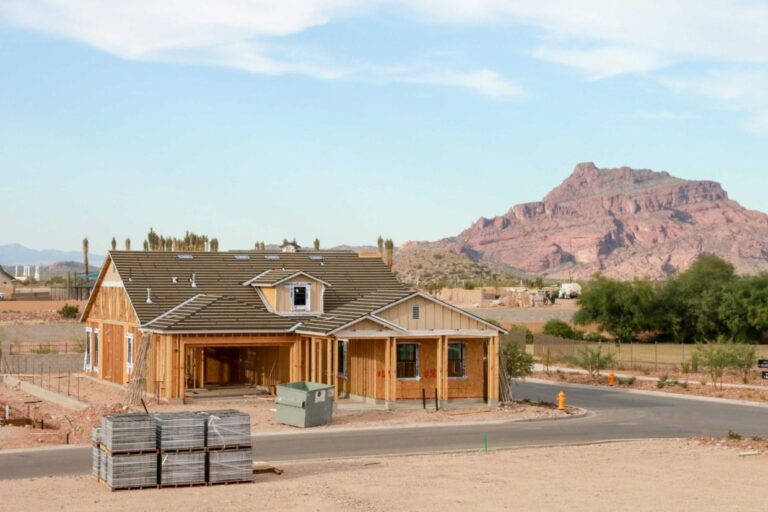Arizona has announced new restrictions on housing development around Phoenix in response to a rapidly diminishing water supply. As one of the fastest-growing metropolitan areas in the United States, Phoenix faces increasing pressure on its already strained water resources amid prolonged drought and climate change. The state’s decision to limit new construction marks a significant shift in managing growth to preserve water availability for current residents and future generations. This move underscores the growing challenges Western states face in balancing development with sustainable resource management.
Arizona Restricts Phoenix-Area Housing Developments Amid Severe Water Shortages
Officials in Arizona have taken decisive action to address the intensifying water crisis gripping the Phoenix metropolitan area. New housing projects in key regions are now facing stringent restrictions, as policymakers aim to curb the exacerbation of water scarcity. This move reflects growing concerns over the Colorado River’s diminishing flow, which supplies water to millions in the Southwest. Developers are being urged to reconsider expansion plans unless they can demonstrate substantial water conservation measures or alternative supply solutions.
Key elements of the new restrictions include:
- Mandatory water-use impact assessments for all proposed developments
- Limits on permitted lot sizes to reduce overall demand
- Incentives for incorporating drought-resistant landscaping and water-efficient technologies
| Development Type | Water Use Limit (Gallons per Day) | Required Conservation Measures |
|---|---|---|
| Single-family homes | 250 | Rainwater harvesting systems |
| Multi-family units | 180 | Greywater recycling |
| Commercial Properties | 500 | High-efficiency irrigation |
Impact on Local Economy and Housing Market Analyzed
The decision to curb new housing developments around Phoenix has sparked significant reverberations in the local economy. Real estate developers face increasing constraints, causing a noticeable slowdown in construction projects, which traditionally have been robust economic drivers. Businesses tied to the housing market, from suppliers to local service providers, are now bracing for a contraction in activity. Meanwhile, established homeowners might see property values stabilize or rise due to limited new inventory, although affordability concerns deepen as the supply nips in.
Economists warn that without strategic interventions, the housing shortage could exacerbate socioeconomic divides. The table below highlights key economic indicators impacted by these restrictions:
| Indicator | Pre-Restriction | Projected Post-Restriction |
|---|---|---|
| Housing Starts (monthly) | 4,500 | 2,800 |
| Median Home Price | $370,000 | $430,000 |
| Local Construction Jobs | 25,000 | 18,500 |
Key concerns include:
- Rising housing costs impacting affordability
- Potential slowdown in economic growth tied to real estate
- Risk of increased urban sprawl as developers seek alternatives beyond restricted zones
Strategies for Sustainable Water Management Explored
In response to the critical water shortages impacting the Phoenix metropolitan area, authorities are adopting innovative strategies aimed at balancing urban growth with long-term water viability. Key initiatives focus on integrated water resource management, which prioritizes the protection of existing sources while promoting water reuse and conservation. Urban planners are also collaborating with environmental experts to develop zoning regulations that restrict development in areas most vulnerable to water scarcity.
Among the emphasized approaches are:
- Enhanced groundwater recharge projects using stormwater capture to replenish aquifers.
- Incentives for xeriscaping to reduce outdoor water consumption in residential zones.
- Investment in advanced water treatment technologies to enable safe reuse of greywater for non-potable purposes.
- Implementation of tiered water pricing to encourage conservation across all user categories.
| Strategy | Expected Impact | Timeframe |
|---|---|---|
| Stormwater Recharge Zones | Increase aquifer levels by 15% | 5-7 years |
| Xeriscape Adoption | Reduce residential water use by 25% | 3-5 years |
| Greywater Treatment | Reuse 20% of household wastewater | 4-6 years |
Recommendations for Balancing Growth and Resource Conservation
Effectively managing urban growth while preserving critical water resources requires innovative planning and collaborative policymaking. Prioritizing smart growth principles such as higher-density housing developments and mixed-use neighborhoods can reduce water usage and infrastructure expansion. Encouraging the use of water-efficient landscaping and incentivizing green building certifications ensure new developments align with sustainability goals. Furthermore, adaptive policies that respond to ongoing drought indicators and water availability must be implemented to dynamically guide development limits.
Collaboration between municipalities, water authorities, and developers is crucial to balance expansion and conservation. To assist in this, the following strategies offer a framework for decision-makers:
- Implement tiered water pricing to promote conservation among residents and businesses.
- Invest in water recycling and reuse systems to augment supply without relying solely on freshwater sources.
- Enforce stricter building codes focusing on water-saving appliances and infrastructure.
- Encourage public transit and non-motorized mobility to reduce environmental footprints associated with sprawl.
- Regularly update growth boundaries based on hydrological assessments to prevent overextension.
| Strategy | Impact | Implementation Timeframe |
|---|---|---|
| Tiered Water Pricing | Reduces consumption by 15-25% | Short Term (1-2 years) |
| Water Recycling Systems | Augments supply by up to 30% | Medium Term (3-5 years) |
| Stricter Building Codes | Ensures new developments use 20% less water | Ongoing Policy |
The Conclusion
As Arizona grapples with the reality of a diminishing water supply, the decision to limit new housing development around Phoenix marks a significant shift in regional growth policies. Balancing the demands of a booming population with the finite resources of the desert underscores the complex challenges ahead. How policymakers, developers, and residents adapt to these constraints will shape the future of the state’s most populous metro area in the years to come.







